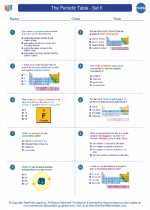Subatomic Particles
The term "subatomic" refers to anything that is smaller than an atom. Atoms are composed of three main subatomic particles: protons, neutrons, and electrons. Each of these particles has its own unique properties and characteristics.
Protons
Protons are positively charged particles found in the nucleus of an atom. They have a relative mass of 1 and a charge of +1. The number of protons in an atom determines its atomic number, which in turn determines the identity of the element.
Neutrons
Neutrons are neutral particles found in the nucleus of an atom. They have a relative mass of 1 and no charge. Neutrons help hold the nucleus together through the strong nuclear force and contribute to the mass of the atom.
Electrons
Electrons are negatively charged particles that orbit the nucleus of an atom in specific energy levels or shells. They have a very small mass compared to protons and neutrons and a charge of -1. Electrons are involved in chemical bonding and determine the reactivity of an element.
Study Guide
- What are the three main subatomic particles and where are they located in an atom?
- What is the charge and relative mass of a proton?
- How do neutrons contribute to the mass of an atom?
- Explain the role of electrons in chemical bonding.
Understanding subatomic particles is fundamental to the study of chemistry and provides insight into the behavior and properties of different elements and compounds.
[Subatomic] Related Worksheets and Study Guides:
.◂Chemistry Worksheets and Study Guides High School. The Periodic Table - Set II

 Worksheet/Answer key
Worksheet/Answer key
 Worksheet/Answer key
Worksheet/Answer key
